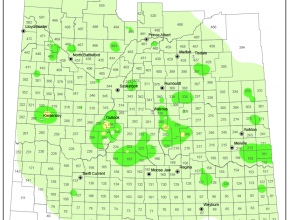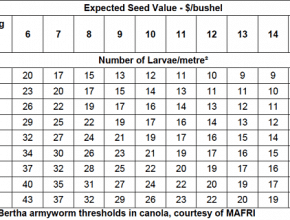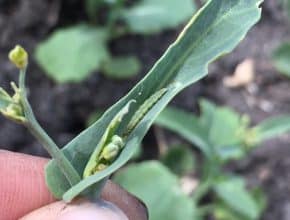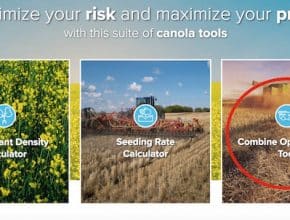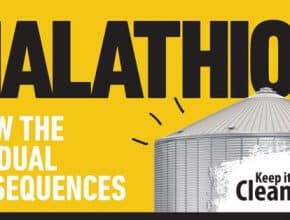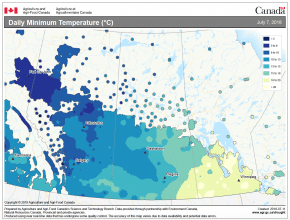Home / Archives for July 2018 / Page 2
-
Eight true or false questions to help you "Keep It Clean"…
-
A few hotspots with higher bertha armyworm moth counts are showing up in Alberta, Saskatchewan and Manitoba…
-
The economic threshold is the density of larvae where the economic value of the yield lost due to feeding equals the cost of control…
-
Diamondback moth larvae are at noticeable levels in many canola fields in the Eastern and southern Interlake areas of Manitoba. But levels are generally below the economic threshold…
-
The combine optimization tool, developed by the Prairie Agricultural Machinery Institute (PAMI) for www.canolacalculator.ca, will help farmers set the combine to keep losses as low as possible while finding a balance with productivity and grain quality…
-
Never use malathion to prepare canola for storage or treat bins in which you plan to store canola. Malathion residue can linger in bins for up to six months after treatment and can be transferred from the bin to canola seed, putting marketability at risk…
-
Test your clubroot skills with these four questions…
-
The area of Western Manitoba where CCC agronomy specialist Justine Cornelsen lives had a low(!) of 24°C on July 7, the day represented in this map from AAFC's Agroclimate Information Service. Hot days in combination with warm nights can increase the amount of flower abortion…
-
Insect trap counts are generally low across the Prairies, but bertha counts keep rising. Here are the latest provincial survey results…

